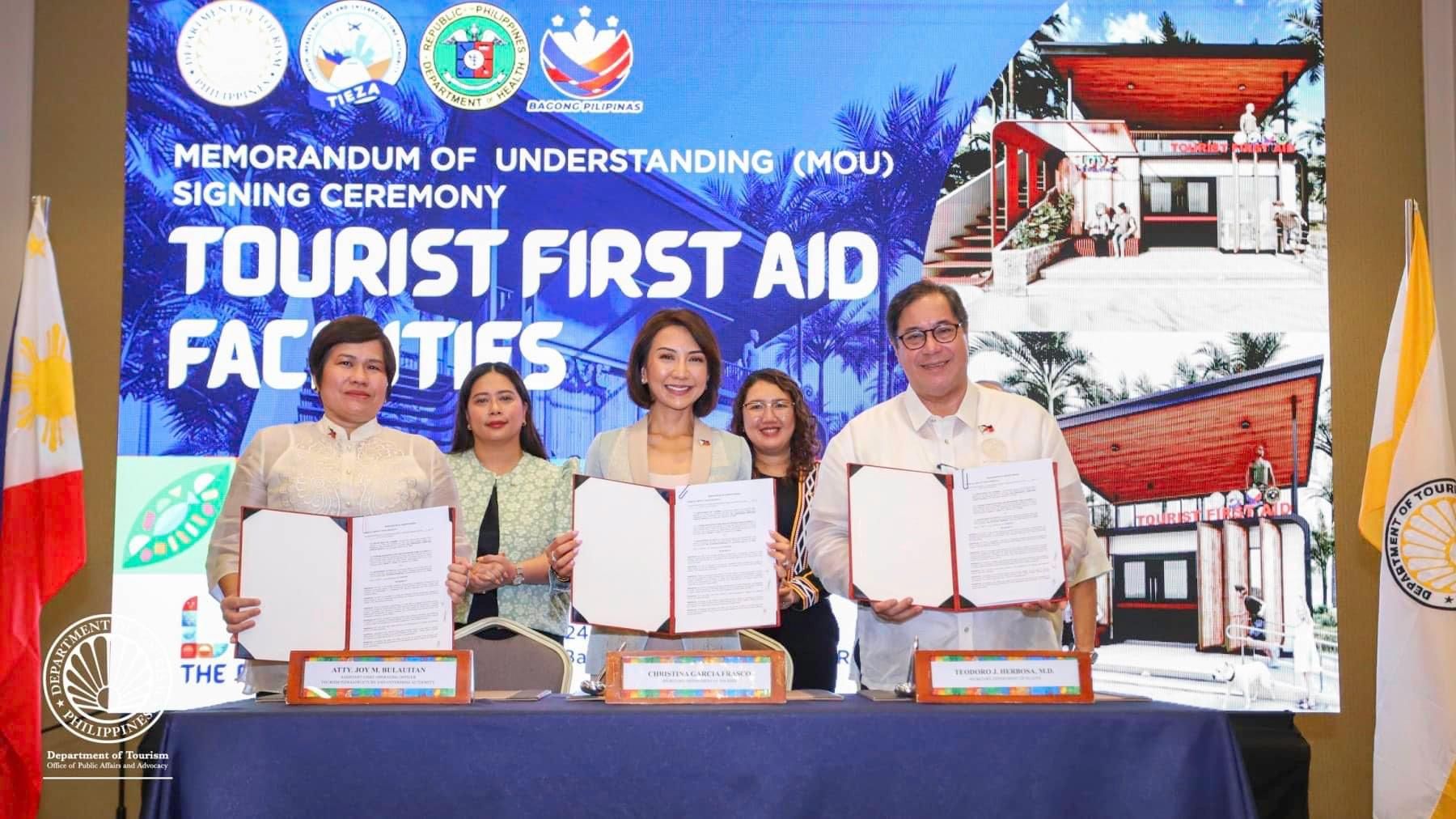MOU inked to establish tourist first aid facilities in key PH destinations
By Jel Santos

To ensure the health and safety of tourists in the Philippines, the Department of Tourism (DOT), the Department of Health (DOH), and the Tourism Infrastructure and Enterprise Zone Authority (TIEZA) on Monday, July 29, forged a memorandum of understanding (MOU) for the establishment of tourist first aid facilities in key tourist destinations in the country.
Tourism Secretary Christina G. Frasco, Health Secretary Teodoro Herbosa Jr., and TIEZA Assistant Chief Operating Officer Joy Bulauitan signed the MOU.
In her speech during the MOU signing in Makati City, Frasco stated that the event sends a crucial message to the world that ensuring tourist safety is the Philippines’ top priority.
The tourism department said the initial batch of Tourist First Aid Facilities will be constructed in key tourist spots including La Union, Boracay, Siargao, Panglao, Palawan, and Puerto Galera, along with other locations with significant tourist activity.
“The Tourist First Aid Facilities shall serve as the emergency response mechanism for any tourist who may encounter accidents or injuries while they are at our islands,” she said.
Such facilities, she said, will be staffed by highly trained healthcare professionals and equipped with essential medical tools and supplies to ensure prompt and effective emergency care.
Frasco stated that the multi-level facilities will also offer preventive care, with the second floor functioning as either a lifeguard station or a viewing deck to monitor tourist conditions
To further support the Tourist First Aid Facilities, especially along lengthy coastlines, she said solar-powered Tourist First Aid Booths will be installed along the beach.
The DOT chief said these booths will address immediate medical needs without requiring medical staff, and will be equipped with first aid supplies, automated external defibrillators (AEDs), pullout stretchers, CCTV cameras, and a two-way communication system linked to a command center for emergency calls.
Frasco noted that the United Nations Tourism Organization has identified health, safety, security, and hygiene as essential factors for the sustainability and competitiveness of tourism.
“If our tourists become ill or injured during a trip to our island destinations, we must be able to ensure proper, rapid, and equal care onsite,” she said.
She highlighted that tourism currently contributes 8.6 percent to the country’s Gross Domestic Product, generating 3.6 trillion in visitor receipts and employing over 6.21 million Filipinos.
“Investing in tourist convenience and safety is an absolute must if we are to further the momentum of the Philippines’ exponential tourism growth which has seen its highest number in recorded history,” said Frasco.